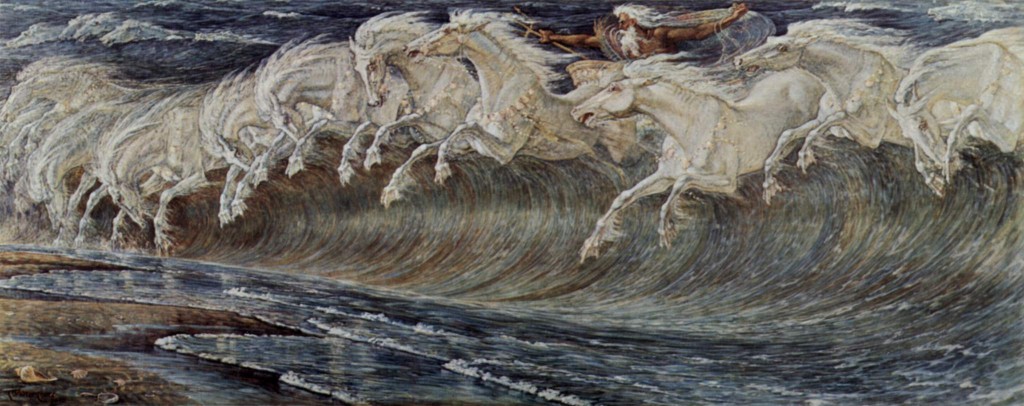A Voiced Scarf
The late Dr. Ruth B. Noller (1923-2008) was my greatest creativity and creative thinking facilitation teacher and mentor. Her motto: A facilitator is a guide by the side rather than a sage on the stage. I feel honored and fortunate to have studied with her for 5 years, both as an undergraduate and graduate student.
 In 1997 her 1982 book, Mentoring: A Voice Scarf was revised. Even though she wrote of strategies for effective mentoring, her students and others who knew her focus on effective creativity-thinking facilitation applied these also as internal compasses for working with groups. I’ve taken the liberty to expand on Ruth’s list to demonstrate ways we can walk the talk and model creativity-thinking behaviors as guides by the sides for others to grow beyond their perceived potential.
In 1997 her 1982 book, Mentoring: A Voice Scarf was revised. Even though she wrote of strategies for effective mentoring, her students and others who knew her focus on effective creativity-thinking facilitation applied these also as internal compasses for working with groups. I’ve taken the liberty to expand on Ruth’s list to demonstrate ways we can walk the talk and model creativity-thinking behaviors as guides by the sides for others to grow beyond their perceived potential.
Strategies for Effective Mentoring (Facilitation) originated by Ruth Noller (1982, 1997)/adapted by Marci Segal (2014)
Attitude of Positiveness/Think Happy Thoughts
Valuing/What’s the most important thing?
Open-Mindedness/Consider alternatives before deciding
Interrelations/Learn from living and shared experiences
Creative Problem Solving/Deliberately free thinking to create new futures
Effective Communication/Listen well, ask questions, consider others’ worlds and how they survive in them
Discovery/Find ways to learn through curiosity… for positive and challenging unexpected consequences
Strengths + Uniqueness/Leverage personal talents to create new ideas, make new decisions + take new actions
Confidence/Build on experience to continue to improve
Awareness/Notice what is going on in context, find and act on opportunities even when you feel none exist
Risk-Taking/Be an active participator, be proactive
Flexibility/Look for alternatives, ask who else, what else, where else, when else, how else
Strangely enough….
read moreStrangely enough, this is the past that somebody in the future is longing to go back to.
Ashleigh Brilliant.
World Creativity and Innovation Day, April 21
![]() Friends, today, April 21, is World Creativity and Innovation Day, named in 2001, it was expanded to World Creativity and Innovation Week in 2005.
Friends, today, April 21, is World Creativity and Innovation Day, named in 2001, it was expanded to World Creativity and Innovation Week in 2005.
I hope you experienced inspired joy, delight. opportunity, and potential during this week, together with so many others all over the world.
Let’s continue to keep the energy moving for new ideas, decisions, actions and products to make the world a better place and make your place in the world better too.
WCIW happens every year from April 15 – 21. I look forward to sharing it with you in 2015, 2016, ….
Marci Segal, MS. Freeing leaders’ thinking so they can create new futures and Founder, World Creativity + Innovation Week April 15-21
read more
There is always more than one right answer
 Your task, if you choose to engage in and/or lead innovation, is to
Your task, if you choose to engage in and/or lead innovation, is to
- Open thinking to new ideas, new potentials, new solutions, new opportunities
- Explore what might work within the current context that takes things forward
- Smile
Marci Segal, MS, Freeing leaders’ thinking so they can create new futures.
Wishing you flexibility, inner strength, and ingenuity during this World Creativity and Innovation Week April 15 – 21, 2014. And joy…always joy…
read more
Creativity is the ability…
“Creativity is the ability to look at the ordinary and see the…extraordinary.” Dewitt Jones

Neptune’s Horses. Walter Crane, 1893.
Marci Segal, MS, freeing leaders’ thinking so they can create new futures.
read moreWant freedom? Redefine your challenges.
If you want a problem to go away, redefine it. See it in another way. Set a new horizon. Dare I repeat…get out of the box… The journey to freedom is a perception change away.
Says Carl Jung –
“The greatest and most important problems of life are all fundamentally insoluble. They can never be solved but only outgrown. Some higher or wider interest arise on the person’s horizon and through this widening of his view, the insoluble problem loses its urgency. It is not solved logically in its own terms, but fades out in contrast to a new and stronger life tendency.”
Says Albert Einstein -
““Problems cannot be solved with the same mind set that created them.”
Keeping a sense of humour helps too.
Creativity involves novelty, usefulness and surprise in ideas, decisions and/or actions.
Three easy ways to open the box
- redefine a challenge [give it new energy]
- see it with new eyes [on a different level of thinking]
- use information to understand it that was not earlier considered
If you are a leader and looking to energize your team, why not hold a lunch meeting where holding a conversation about this notion? I’m happy to help you structure it so that results are also produced. Feel free to get in touch.
Marci Segal, MS, Freeing Leaders’ thinking so they can create new futures.
read more
How to connect with people face to face – infographic
Creative thinking involves generating new ideas, making new decisions and taking new actions that are novel, useful and surprising. Interactions with others can help that all to happen.
A client admitted concern because her younger team members didn’t know how to hold conversations. She feared their not feeling comfortable in situations ripe for collaborative creativity. Although they spoke easily about business in face-to-face situations they lacked personal connections with each other and their clients.
She was delighted with the points on this infographic and used it with her team during hosted lunches. Once they felt comfortable with the three steps, they extended their reach with clients by having lunches specifically targeted for strengthening connections.
Perhaps this is something you might explore with your team. It’s an easy and effective World Creativity and Innovation Week April 15 – 21 activity. New ideas, new ideas, new actions that make the world a better place and make your place in the world better too. Why not, eh?
To really connect with people…
- Ask insightful questions
- Add value
- Learn their stories
Marci Segal, MS, freeing leaders’ thinking so they can create new futures.
read more
Design Thinking Bootcamp Slides Redux
Greetings all.
Hope you enjoy this refresh of the Design Thinking Bootcamp slides. The original post disappeared….
You might like to scan this design thinking slide deck to generate new ideas, make new decisions and take new actions in your organization.
Before you do, a reminder it’s helpful to entertain new ways of perceiving and putting things together, and to risk stimulating your curiosity about what might emerge…
Marci Segal, MS
Freeing Leaders’ thinking so they can create new futures
2014 Year in Marketing – good questions for new thinking
This Haiku deck shares trigger questions that can open doors of perception and considerations. Even though it’s geared for marketing, anyone can leverage these when seeking new ideas so to make new decisions for new actions.
Created with Haiku Deck, the free presentation app for iPad
MARCI SEGAL, MS Freeing leaders’ thinking so they can create new futures.
read moreLearn first to fall
Spending the holiday season in the mountains of southern Alberta. We took a refresher course in Nordic/x-country skiing because we haven’t enjoyed the sport for years.
Learning to fall
The first thing our instructor showed us was how to fall. It makes sense if you think about it almost everyone who skis falls.
Is the same thing true about learning new things, innovating or starting a business?
Our instructor demonstrated us the finesse of falling – how not to get the poles in the way, how to spot a soft place to land, and how to roll over onto the back waving skis overhead, grab the tips and roll back to the righted position. Once we aced the falling technique we proceeded to practice stride, pole placement and stopping on a downhill.
What if learning to fall or fail was the first lesson taught in any subject?
What if instructors and other leaders proceeded in the same way – pointing ways to handle a downturn, a failure, a mistake before they happen. Wouldn’t it be interesting if staff or students were ready for handling a fall before attempting success?
Where’s the focus of attention?
As we skied that afternoon I noticed I didn’t much look away from the tips of my skis, unaccustomed to the feel of sliding on snow. I wasn’t yet comfortable to look at the surrounding mountains and move in long steady glides with poles planted at just the right spot at just the right time. My concentration was on keeping upright even though the first thing I learned was how to handle a fall.
A lesson here? Learning to fall first enables confidence for using new ideas, making new decisions and taking new actions to risk and experience success.
Merry Christmas, Joyous Kwanzaa, and Happy Festivus!
Thank you for reading my blog and enriching my life online.
Wishing you and your family Peace, Love & Joy
Marci Segal, MS
Freeing Leaders’ thinking so they can create new futures.
read more



Follow…